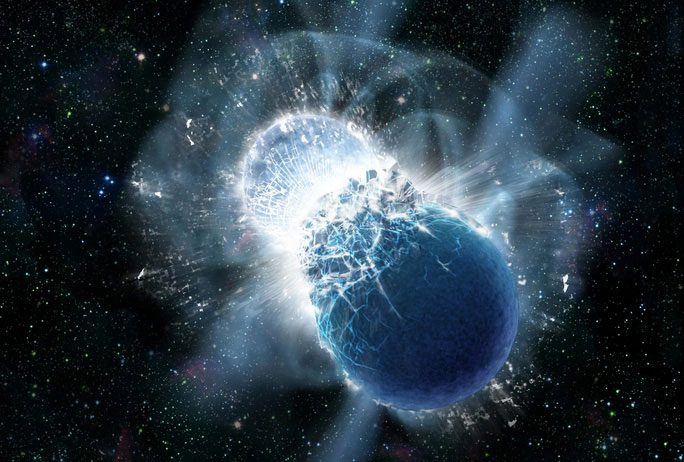A radioactive isotope not belonging to Earth has been discovered in deep-sea sediments of the Pacific Ocean, providing evidence of an extraterrestrial “deluge.”
According to Science Alert, this is plutonium-224, an element with a half-life of just over 80 million years, which means it could not have existed on Earth since the “beginning of time” over 4.5 billion years ago. The rare isotope of this element, named after the Roman god of the underworld (Pluto), is consistently found alongside iron-60, an isotope of iron previously confirmed to be an “extraterrestrial intruder.”
The research team, led by physicist Anton Wallner from the Australian National University, found this rare isotope in deep-sea sediment samples nearly 1,500 meters below the Pacific Ocean.

A neutron star explosion or collision could create an extraterrestrial “deluge” – (Graphic: Dana Berry, SkyWorks Digital).
According to Dr. Wallner, this plutonium-224 may have been produced from supernova explosions, or more specifically, from what is believed to be the most violent event in the universe – a neutron star explosion.
Neutron stars are one of the most energy-dense forms of matter, so their explosions impact a vast area of space. Astrophysicists also suspect that some mysterious radio bursts received on Earth recently are from neutron star explosions in other galaxies. Therefore, this explosion is considered a cosmic “deluge.”
The mystery surrounding this extraterrestrial “death isotope” has not been completely unraveled, but the presence of iron-60 alongside it corresponds to 2-4 catastrophic explosions occurring just 160-330 light-years away from Earth. Given the age of the “death isotope,” it is clear that Earth must have experienced an extraterrestrial deluge much more recently than we might think – less than 80 million years ago.
According to the Daily Mail, another hypothesis suggests that plutonium-224 wandered through the interstellar medium and was propelled into the Solar System by a supernova explosion.
The article published in Science asserts that examining radioactive isotopes related to these furious extraterrestrial events could help build a signature system, allowing us to learn more about collisions and explosions in the surrounding space and their impact on life on Earth. Previous studies have linked supernova explosions to mass extinction events.



















































